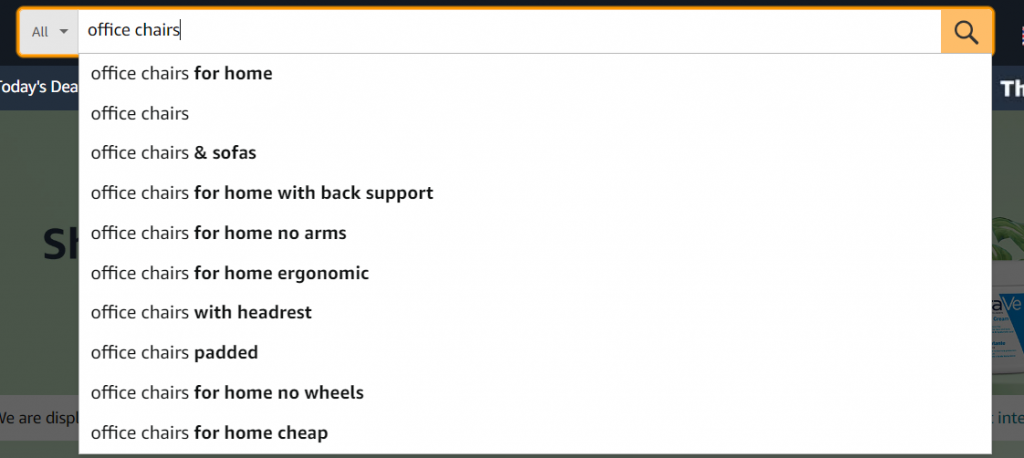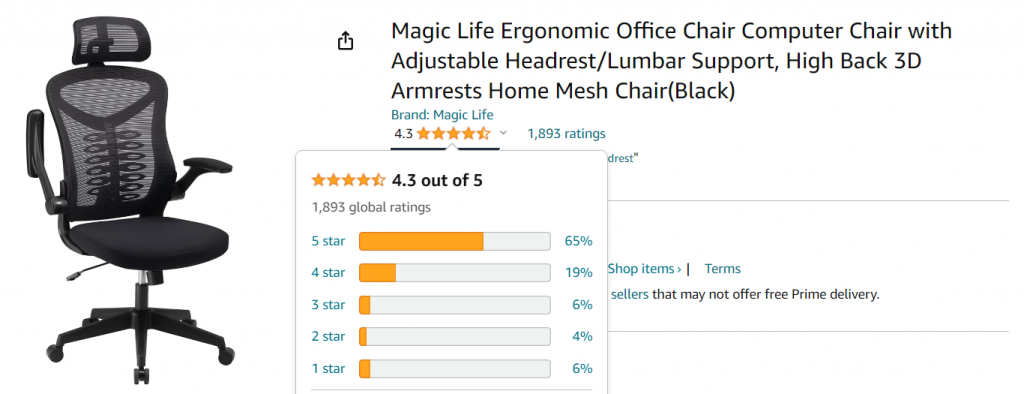

Amazon SEO Checklist: 4 Tips to Boost Your Product Rankings
Written By Otilia Crizbasan | 11 December, 2023
Maximising product visibility in a crowded marketplace
You probably hear a lot about what you need to do for your website to make it SEO-friendly for users.
But what about Amazon SEO?
Amazon stands as a critical online marketplace for e-commerce businesses. However, the vast number of sellers in this space means that simply listing your products isn’t enough. It’s essential to have a robust strategy that can boost your discoverability on the platform.
Read our article to learn about Amazon SEO, how it works, and four ways to optimise it to drive more traffic to your products.
What Is Amazon SEO?
Amazon SEO aims to boost the ranking of your products on the platform by optimising them for specific and related keywords. Similar to Instagram SEO or TikTok SEO, it entails employing diverse strategies and techniques to enhance the attractiveness of your content to the search algorithm.
When your product listing is optimised, it’s easier for Amazon to understand what you’re selling and show it to the right customers.
A few simple actions can enhance listings for your product search, boost sales, and help shoppers find your brand.
What makes Amazon SEO so important?
Standing out in search results is crucial to succeed in this competitive online marketplace. This is where SEO comes into play. It involves optimising your listings to increase visibility and appeal to potential buyers.
But why is Amazon SEO so important that you should dedicate your time to getting found on the platform? Check out some stats that answer this question:
- Over 60% of US online shoppers start their product search on Amazon
- Amazon has 310 million customers worldwide
- 98.07 million people use the app at least once a month
We spoke about this with Dan Fernandez, Head of SEO at Found, a London-based digital marketing agency: “As Amazon’s transformation into more of a product discovery and search tool continues, so does competition on the platform for your brand. With so much choice available for every possible product, your listings need to align to user intent, Amazon’s best practices, and be visible across a range of product search queries.”
Understanding Amazon’s A10 ranking algorithm
Amazon’s propriety search algorithm identifies what products rank in search results.
The Amazon A10 algorithm, an update from the earlier A9 version, focuses more on external factors like customer reviews and social media attention. Unlike A9, which mainly used Amazon’s own data like sales history and conversion rates, A10 values how customers interact with products on and off the e-commerce platform. This change means that external engagement is now also meaningful for product ranking.
According to Semrush, A10 examines multiple factors when determining how to rank products, including:
- Keywords — Ensuring relevant keywords are part of your product listing helps signal to Amazon the appropriateness of your product for specific searches.
- Conversion rate — The platform is inclined to display products that convert well, indicating that a high conversion rate can raise your product’s ranking in its search results.
- Reviews — Positive feedback on your product listing influences shoppers’ buying decisions. A large volume of good reviews means better conversion rates, so higher ranking in search results.
- Sales history — High sales numbers in a product listing reflect its success. Maintaining a strong sales record shows Amazon that your product is a worthy candidate for display to potential buyers.
4 tips to improve your SEO on Amazon
Dan Fernandez adds: “With Amazon continuously rolling out new platform features to sellers and developing engagement-driving features for customers (e.g. automated review prompts), it’s vital to optimise your brand and product positioning to differentiate on quality vs the huge number of copycat sellers who differentiate on price.”
Here are a few things you can do:
- Conduct keyword research and analysis
This step will help you determine the most effective keywords for your product descriptions. When starting out, using long-tail keywords is a good idea. They usually have less competition, making it easier for you to achieve a higher position in search rankings.
If you want to determine which keywords to use for your product listings, try using Amazon’s Auto-Complete feature. First, type your seed keyword, office chairs, into the search bar which will suggest related keywords.

Add prepositions like “for,” “in,” “to,” “on,” “with,” and “without” to try to get even more suggestions.
Dive into your competition’s listings and spot the keywords they frequently use. You can consider including a keyword in your strategy if you notice a keyword popping up often at various competitors.
Instead of analysing each listing manually, you can accelerate the process by employing different tools, such as Semrush’s Instant Keyword Research or Ahref Keyword Tool.
- Optimise product titles for maximum impact
When posting products on Amazon, titles are essential. Since they are the first elements that catch the attention of a potential customer, making them search-friendly is a key practice for successful listings.
Amazon has specific guidelines for product titles for sellers, such as:
- Avoid using all caps. Use title case instead.
- Avoid promotional phrases (e.g., “free shipping”)
- Use numerals (e.g., “2” instead of “two”)
Don’t forget to incorporate within the title the primary keyword you’re looking to rank for.
- Create high-quality product images
Alongside your title, the quality of the images you select is vital in attracting customer interest. Consumers typically base their initial impressions on your product images. Make sure you choose high-resolution pictures on Amazon.
You must comply with their image requirements while doing so, such as:
- Use photos—not drawings or illustrations
- A white background is mandatory
- For optimal results, images should be 1,600 pixels or larger. The minimum size is 500 x 500 pixels, and images should not exceed 10,000 pixels
- Supported file formats include JPEG, PNG, TIFF, and GIF (non-animated)
- Need to match the product in colour and size
To keep in mind: your main images must not include text, logos, borders, colour blocks, watermarks, or other graphics over the top of a product or in the background.
- Generate positive product reviews and ratings
For your products to succeed on Amazon, earning positive reviews and high ratings is essential.

The e-commerce platform is more likely to feature products with positive feedback in better search positions. And that’s because they provide social proof and help shoppers decide whether to buy or not.
Don’t be afraid to use the “Request a Review” button. All you need to do is click the button next to an order and Amazon will automatically send the customer a review request email.
Final thoughts
Google isn’t the only big name in the search game anymore. Keep an eye on the other platforms that are becoming popular, such as Instagram, TikTok, TripAdvisor, and Amazon.
Now, it’s more important than ever to ensure your product listings are precisely aligned with what people are searching for, especially on a global e-commerce giant like Amazon.
Get in touch to discover how Luminr can help your business own Amazon





